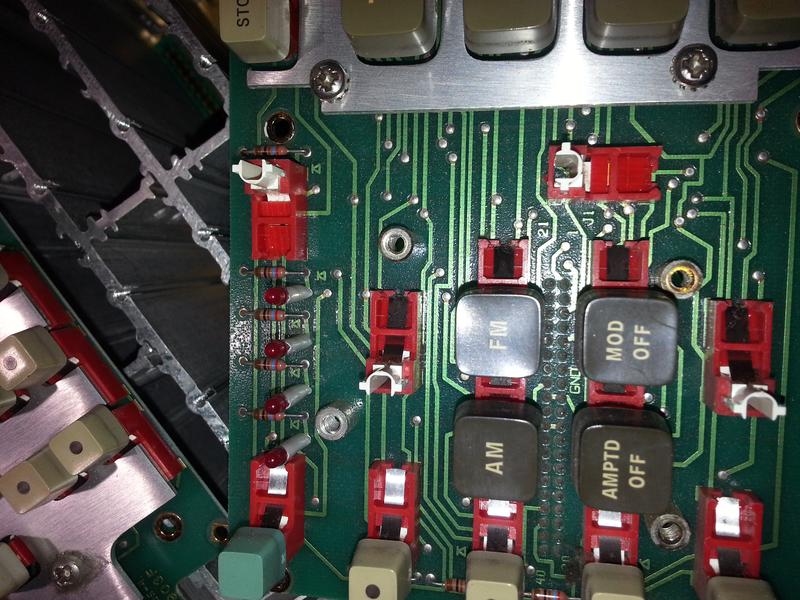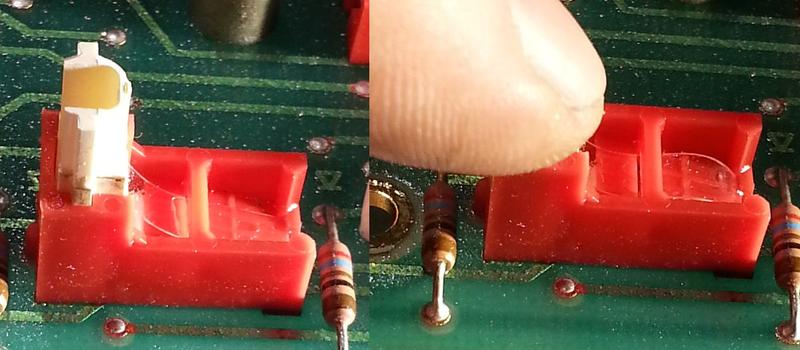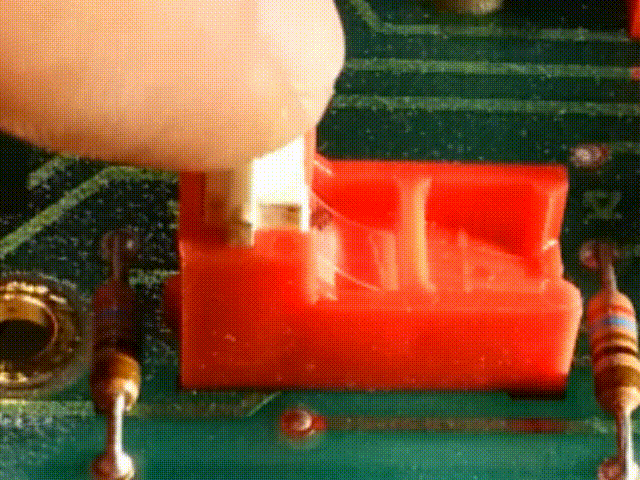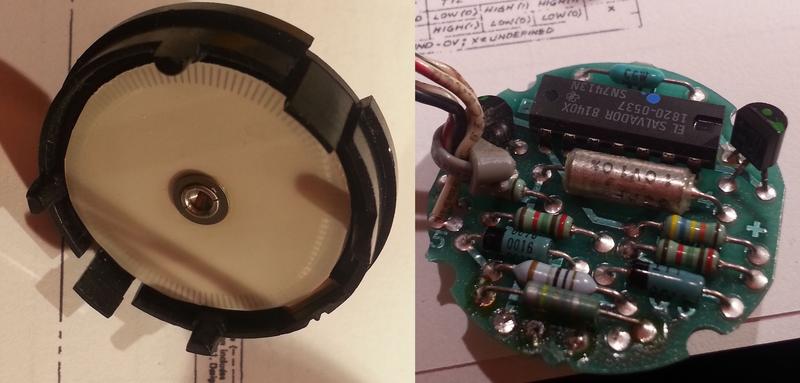This is the part 2 on my series about my HP 8662A Signal Generator. After fixing the PSU, several more problems needed to be addressed:
- a few sloppy keys on the keypad,
- the know did not work at all,
- and more importantly, some very unpleasant spectrums at some frequencies (covered in part 3),
- some output level accuracy problems.
Keypad
The keypad was, as allways with HP devices from this period, very hard and "clunky" for most keys but 2.
No surprise: these keys were missing their famous (well, for some at least) spring:

As you can (not) see, the "Status" key as well as the "Increment Set" key have no spring at all.
While I was cleaning the unit, I've been half-lucky and found one of the 2 missing springs. But I had to figure a solution for the other missing one.
I thought about:
- buying a replacement key: the ones I found are ridiculously expensite,
- buying a front panel for an HP gear from this era: might be a reasonable approach,
- looking for ready made springs: could not find,
- asking some custom made ones from a company making springs: got a few responses, one of them quite reasonable even for small quantities (between 3 to 5€ each).
While I was looking for a solution, I also gave a try to a simple solution: cut a replacement "spring" from a plastic wrap. I tried several wraps (of several widths), and I found one that seems to work just fine, and the feeling is about the same as original keys:


I cleaned all keys using some deoxit contact cleaner which also lubricated those noisy springs making the keys nice ans smooth again.
Rotary encoder
The rotary encoder was not working at all, and once again, a classical failure for those old HP gears: the small bulb used as light source for the optical encoder was dead.
I tried to replace it with a 3mm LED I had in my junk box, but it did not work, so I bought a few replacement bulbs on ebay, and sure enough, the encoder is now working ok (not perfectly, there are some missed steps: there are two small screws that look like adjustment screws, but I'm not sure how to tune them).
